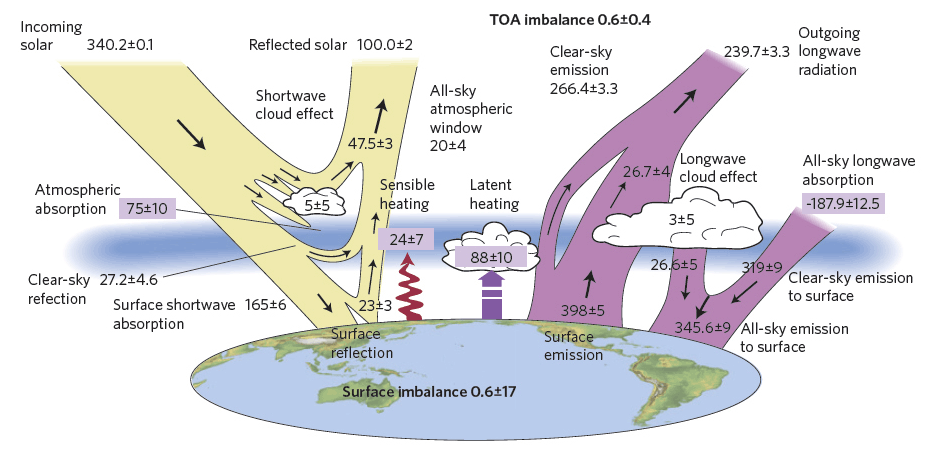The 33 degree discrepancy is the starting point for most discussion on the Greenhouse Gas Effect. It basically goes like this:
The Earth receives 240 Wm-2 of solar energy which by the Stefan-Boltzmann Law would have a temperature of 255K degrees, The surface of the Earth is 288K degrees which by the Stefan-Boltzmann Law would have an energy of 390 Wm-2. The differences 33C(K) degree and 150 Wm-2 are the Greenhouse Gas Effect.
Sound very "sciency" and authoritative like it is carved in stone. It is actually a logical statement. If this and if that then this. So there are several hidden assumptions.
First, the Stefan-Boltzmann law has an uncertainty of 0.924 which is a bit more of a low side instead of a plus or minus type of uncertainty. That is important to remember because a lot of statistics assume a "normal" distribution, +/- the same amount around a mean, to be accurate. The S-B correction is related to efficiency which cannot exceed 100% so 0.924 implies you can "expect" around 92.4% efficiency. I am sure many can argue that point, but that is my understanding.
So using that uncertainty "properly", both sides of the 33C discrepancy should have -0.76% error bars included in there some where. I have never seen that displayed on any AGW site. So for the solar energy received you should have 240 Wm-2 to 222 Wm-2 or about 18 Wm-2 of slop.
That "slop" may be due to a number of factors, but since the 33C discrepancy assume a constant reflection, there is a good chance that the two are inextricably inter related. There is no "perfect" black body and low angle reflection is likely the reason. We can get flat surfaces to behave like 99.9999.. percent black bodies, but most objects are not perfectly flat.
Now this large error range was actually included in one of the more recent Earth Energy Budgets by Stephens et al.
Right at the bottom by Surface Imbalance is a +/-17 Wm-2. Now that error range is based on a large sampling of guestimates, not the basic S-B law, but it is pretty amazing to me how well the old guys included uncertainty. Now you could jump in and say, "but that is a +/- error range!" True, but it is based on guestimates. You could rework the budget so that you could reduce that range to about half or around +/-8.5 Wm-2, but you are going to find it hard to get below that range.


No comments:
Post a Comment